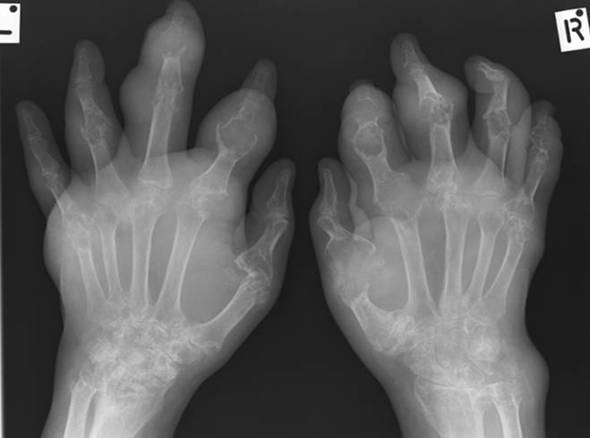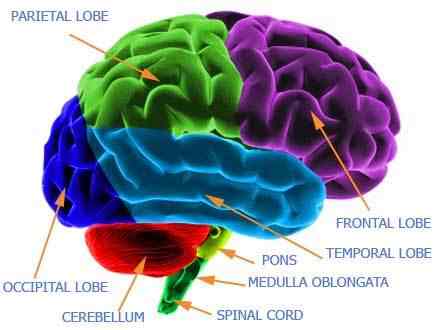
Saturday, July 30, 2011
Dolphins Have Super Sense Powers

Misty reservoir would fill 140 trillion Earth oceans, scientists say.


7 Billion in 2011
 Science Daily.com reports that soon this year we will reach 7 billion people in the entire world population. In 1999 there was 6 billion, this means that in 12 years we gained an extra 1 billion people.
Science Daily.com reports that soon this year we will reach 7 billion people in the entire world population. In 1999 there was 6 billion, this means that in 12 years we gained an extra 1 billion people.Friday, July 29, 2011
Fat Substitutes Linked to Weight Gain
Cancer Risk Increases With Height

The taller a woman is, at a greaterrisk for cancer, a large study has found.
Researchers at the University of Oxford in England analyzed data on more than 1.2 million British women followed for an average of 9.4 years. There were more than 97,000 cases of cancer among the women. The researchers found that for each four-inch increase in height over 5 feet 1 inch, the risk that a woman would develop cancer increased by about 16 percent. The analysis covered 17 types of cancer, but the relative risk increase was statistically significant for just 10 of them. The authors suggest that levels of growth hormone might be involved in the genesis of cancer, or that taller people are at greater risk for mutations simply because their bodies comprise more cells.
Taller women had a higher risk of several kinds of cancer, including bowel cancer, skin cancer, breast cancer, cancer of the ovaries, cancer of the womb lining, cancer of the kidneys, leukemia, non-Hodgkin’s lymphoma), and cancers affecting the nervous system. Although the study looked only at middle-aged women, previous research has found similar results for men.
Although the researchers found a link between height and cancer, it’s hard to say what the cause might be. There are several theories. Your height is determined partly by your genes, and some cancers have a genetic cause. So, it might be that some people have a genetic type that makes them taller and more likely to develop cancer. Aspects of someone’s life such as the food they eat, how well-nourished they were as a child, and their social group may affect both height and cancer risk.
I find this interesting because many people in my family have developed cancer, and are of many different body shapes and sizes. It leads me to wondering if the theory behind body size is true, or if it is just genetics that causes cancer.Studying Brain Activity From Decapitations

An article on MSNBC suggests that the brain may live on after being decapitated for a period of time. A study done at Raboud University Nijmegan in the Netherlands explored the ethics of killing lab rats through decapitation. The EEG ( a measure of electrical brain activity), ended 17 seconds after decapitation. About a minute after, a large wave went through the brain. Dubbed the "wave of death", the researchers thought this was the final blow. Neurologist Michel van Putten and his colleagues at the University of Twente have suggested that the brain cells could be revived if fed oxygen and glucose. Granted, this is not a "living" brain, but is a very interesting fact about brain cells.
This article was interesting because of the strange nature of the study. Decapitation is a gruesome way to obtain information about brain activity, but nonetheless has given some interesting data on brain cells. This type of research could be very useful if it further gives information on the revival of brain cells. The medical field especially could benefit.
Can Science Improve Man's Best Friend?

"The Disease of Kings"

The disease gout also known as the “disease of kings” is on the rise as more and more Americans gain weight. It’s called the disease of kings because it was once thought to be only associated with the privileged few who had the means necessary to over indulge in food. The prevalence of gout has more than doubled in the past 50 years. Gout can be correlated to obesity and hypertension.
Gout is a build up of uric acid, because of diet, lifestyle, disease or medication, which causes small crystals to form in a joint, leading to inflammation and intense pain. Despite the increasing cases of gout in America it is one of the most, if not the most preventable and treatable forms of arthritis.
Obesity has been increasing dramatically in our county over the past half century. Even children are affected by obesity. As children and adults gain more weight, the risk factors for cardiovascular problems and diabetes goes through the roof. Its one thing that you can’t change your genetics, but you can change your diet. Gout can be easily prevented with a good diet and exercise. I think that if you find you self incapable of keeping/making a diet or starting a good exercise routine, its time to see a professional such as a nutritionist, personal trainer, or even some sort of therapist so later down the road you don’t not have medical problems to deal with. Because life is filled with so many ups and downs, I think obesity and all the problems associated is one of the last thing’s I would want to be concerned with.
Gulf Oil Effect Bird Eggs

In Daily Science, it described Texas Tech University's experiment and research taken place regarding the effect that the weathered oil would have on unhatched eggs.
In their experiment, only 39 percent of the eggs hatched while the other 61 percent died. The weathered oil had a better outcome than the non-weathered oil. The birds whose mating seasons were interrupted due to the Gulf Spill were definitely negatively affected, but there's a chance some eggs, hopefully at least 39 percent will hatch in the wild.
There is still a chance that the covered eggs that survive may obtain developmental problems. Hopefully, the bird population will survive throughout the years.
When the Brain Remembers but the Patient Doesn’t

This article from Science Daily discusses how the unconscious brain is able to function without the availability of the conscious brain. In one case, a patient survived an accident with brain damage and face blindness. To test her unconscious brain, doctors showed her images of familiar faces, unknown faces, and celebrity faces. They included new celebrities, as well as those who were famous before the patient’s accident.
The patient was not able to recognize the famous faces, however, her brain responded to the celebrities from before her accident. Professor Pegna concludes, “implicit processing might continue to occur despite the presence of an apparent impairment in conscious processing.” As long as a person’s cerebral structures are in a certain order (regarding time), then he will be able to respond to visual stimuli.
I think it is amazing how a person’s memory—from the time of the accident and beyond—may be damaged, but the memories that were established prior to the accident are still in tact. We can see here that just because a person with brain damage may not outwardly communicate visual awareness to doctors does not mean the brain is unresponsive. Ultimately, we can learn how important physiological testing is to learning about the condition of the brain.
Photograph: http://www.molwick.com/en/brain/025-human-brain-structure.html
A Cougar's 1,500 Mile Journey

Thursday, July 28, 2011
Cancer Development

Contrary to previous belief, scientists are now discovering that cancers may be classified as a different parasitic species living in an organism. They are comparable to a bacterial level organism. Essentially, they grow when, where, and how they want instead of following the host organisms orders. That would qualify them as a different species. However, they are slightly different because their genome, unlike most other organisms, is constantly changing, so a new species is made with every individual cancer patient. Also, scientists previously believed that cancer was caused by random gene mutations. Now, however, many molecular biologists believe that cancer is caused by multiple chromosomal disorders.
This is an important step in cancer research. Cancer is a very successful parasite because of its resiliency. It can change the amount of chromosomes it has many times, but can still live as long as genes responsible for asexual reproduction are still in place. They are primitive, which works to their advantage, as imperfect mitosis allows them to constantly evolve. This makes finding a universal cancer drug that does not also kill the host almost impossible.
1. http://www.sciencedaily.com/releases/2011/07/110726163519.htm
Bigger Brains for Those Closer to Arctic

Nerve Cells in Dolphins Form New Ways of Living
 http://static.guim.co.uk/sys-images/Guardian/Pix/pictures/2008/04/17/dolphin11a.jpg
http://static.guim.co.uk/sys-images/Guardian/Pix/pictures/2008/04/17/dolphin11a.jpgGrasping for Any Way to Prevent Alzheimer’s
While reading this article about Alzheimer’s disease that was published in the New York Times I became mad and decided that this article should have never been published in the first place. Alzheimer’s is a mysterious and sad disease to get and even more so to watch a loved one die from. The article talked about a new study, by researchers at the University of California, San Francisco, estimated how many Alzheimer’s cases might be attributable to certain behaviors or conditions: physical inactivity, smoking, depression, low education, hypertension, obesity and diabetes.
The part in this article that pissed me off the most was where they said… “The operative word was “could.” As the researchers pointed out, there is not yet scientific proof that any of these risk factors in fact cause Alzheimer’s. Only if they are shown to do so could the new analysis be considered a practical recipe for preventing the disease.”… also ““These things are not definitive,” said one author, Dr. Kristine Yaffe, a professor of psychiatry, neurology and epidemiology. “We’re assuming that these are sort of causally related to the risk of dementia and Alzheimer’s, but unless you have a great trial, you just don’t know.” … but the best part of this article is when they talk about the trial studies and they say “Evidence for or against any other causal factor was poor, often because studies were small, used vague or changing definitions, or did not rigorously monitor what subjects were doing.” Really?? Your not even watching the patients…why bother having a study?
Nobody knows how or why this disease happens but for my Nanny’s sake who died from Alzheimer’s in 2008 and had none of these “factors”, I hope the research to find a cure for Alzheimer’s is better than what this article is portraying. Especially since it is on the rise and I hope many families don’t have to go threw what I did…until then my family will keep donating and I hope researchers find a cure soon.
http://www.nytimes.com/2011/07/26/health/26alzheimer.html?ref=science
http://www.alzfdn.org/?gclid=COrlyYDJpKoCFeVx5Qodd2uOYw
